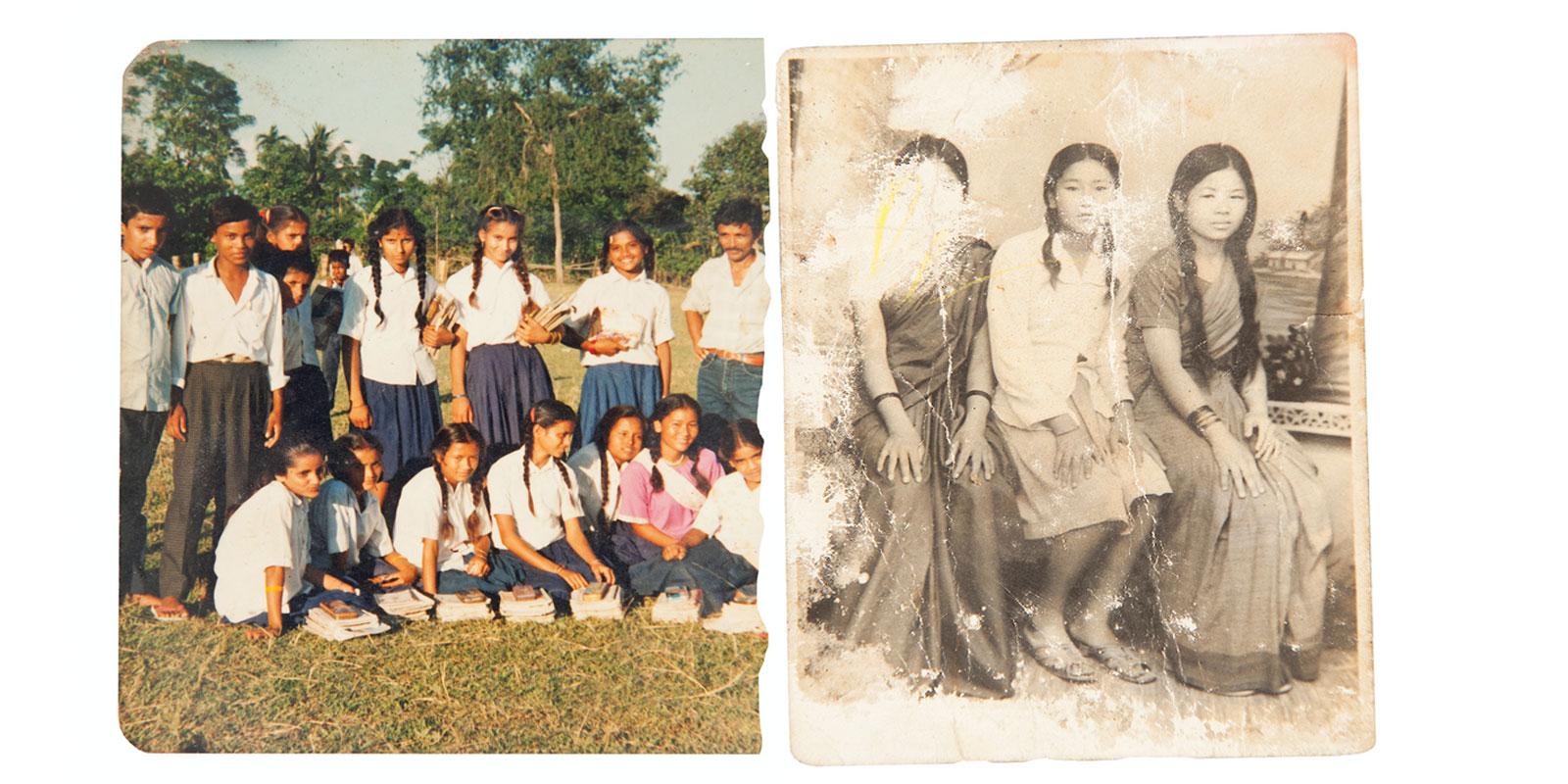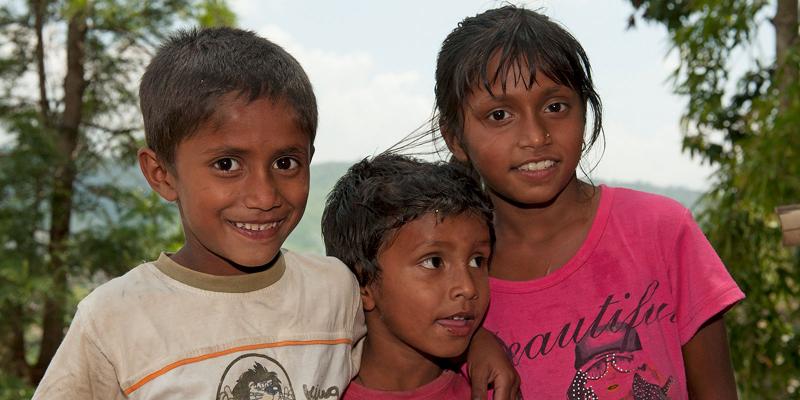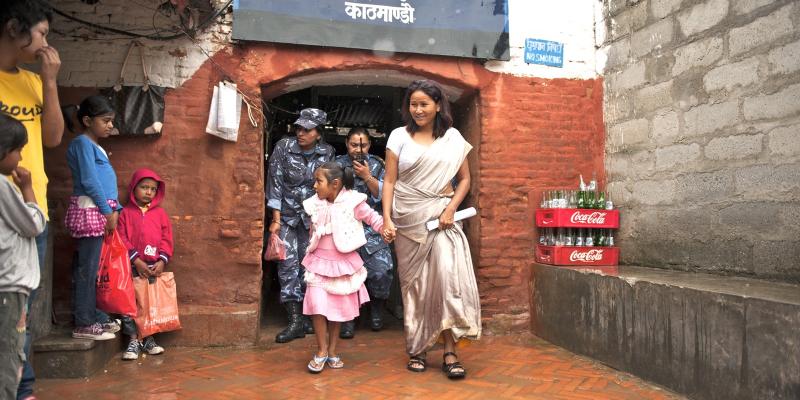
The first photographs of Indira.
Indira’s feet slip in the mud on the narrow path between the rice fields. She is six years old. Naked and barefoot, she gathers firewood in a big basket on her back.
Two older girls walk towards Indira on the path. They are wearing blue school uniforms and their hair is in long, shiny plaits. When they get to
Indira on the narrow path they push her and she falls over. The girls laugh loudly and walk on.
Indira gathers the firewood up again. She is in pain. But it isn't the cuts on her feet that hurt – the ones she gets from walking barefoot on soil and stones. It’s some-thing else, something inside, that is hurting her and making her cry.
All day, she has been running around the village as usual, helping everyone. Fetching water and wood. Taking cows and goats into the jungle to graze. Searching for edible mushrooms and roots to take home. She even found two crabs in the river, and lit a fire and cooked them.
Indira knows it's important to work hard. Not to be lazy. She likes working and learning new things. People in the village rarely call her Indira. She has two other names instead. One is Kanchi, or little one, since she is the youngest child in the Magar family. The other name is Niguri, which is the name of a jungle fruit that is covered in curly hair. Indira has a shock of wild, wavy hair on her head. She's the only person in the village with wavy hair, so she is a bit different. Here, hair is meant to be straight and smooth and easy to tie back in shiny plaits. Indira doesn't like being called Niguri, but she tries not to let it get to her.
Sleeping with the cows
She doesn’t see her mother and father during the day. They work for other people in the fields, to support the family. When they come home in the evening, they often find Indira among the cows, where she likes to sleep.
“Kanchi,” sighs her mother, “now let’s go home and wash off the cow poo again.”
The family have a simple house on stilts. It only has walls on two sides, so it’s wide open straight through. The floor is covered with old rice sacks.
For dinner they eat rice. Almost always rice, but now and again Indira’s mother brings a few soya beans from the field. She hides them in her clothes.
Indira’s two older brothers go to school. She wants to go too. She wants to learn to read and write, and wear a lovely school uniform. At the moment all she wears is a tunic made from prickly sackcloth.
Indira nags and nags and prays to God. But there isn’t enough money. And she is a girl. There’s no point in paying for schooling for girls, since all they do is get married and look after children anyway.
Instead, Indira hangs over her brother’s shoulder while he’s doing his homework. And she begs and begs and begs. He gets annoyed, but she keeps ask-ing. Finally, he gives in and starts to teach her letters and numbers.
Indira learns fast. She re-peats everything, and writes letters in the sand. The brothers also teach some of the adults in the village at home, and Indira listens intently while chopping vegetables or cook-ing rice. He reads out stories of famous men and women in history, who have done good things for others. Indira absorbs everything, and forgets nothing. Now she knows that she wants to be a person who helps others.
By the time she is ten years old, Indira can read and write, and she knows that she can learn almost anything.
“Of course I can!”
Nobody can tell Indira that there are some things she just can’t do because she’s a girl. Like ploughing the fields, for example.
“Of course I can!” says Indira, and pulls the plough just as well as the strong boys. She draws strength from her pure stubbornness and often turns out to be even stronger than the older boys. She beats them at football.
A teacher has heard about Indira, and persuades her parents to allow her to start school. Her brother saves up for her school fees by selling bananas. The teacher thinks she should start in Year 4. Indira doesn’t agree. Year 5 suits her much better, so it is decided. But there is no money for a school uniform or school-bag. Indira just wears her tunic.
That remains her school uniform throughout her years at school. They can’t even afford pens or crayons. She has to strain to remember everything that the teacher shows them on the chalkboard, and as soon as they get a break she sits down on the ground and writes everything in the sand from memory. That’s why she never has time to play with the other children. At lunchtime she has to run home and move the animals to a different pasture. She has to do that every morning, lunchtime, and evening.
Indira gets on well at school. She is particularly gifted at maths. Within a year, Indira is the best in the class and she gets a scholarship. And she has much higher grades than those two girls who pushed her over. She forgave them a long time ago. But she will never excuse injustice.
Text: Eva-Pia Worland
Photo: Johan Bjerke

Safe sleep
Indira or one of the other adults at the
children’s home always sleep alongside
the new children. They need to feel safe.

Prison visit
Indira has come along with two brothers
so they can visit their dad in prison.
Långgatan 13, 647 30, Mariefred, Sweden
Phone: +46-159-129 00 • info@worldschildrensprize.org
© 2020 World’s Children’s Prize Foundation. All rights reserved. WORLD'S CHILDREN'S PRIZE®, the Foundation's logo, WORLD'S CHILDREN'S PRIZE FOR THE RIGHTS OF THE CHILD®, WORLD'S CHILDREN'S PARLIAMENT®, WORLD'S CHILDREN'S OMBUDSMAN®, WORLD'S CHILDREN'S PRESS CONFERENCE® and YOU ME EQUAL RIGHTS are service marks of the Foundation.




